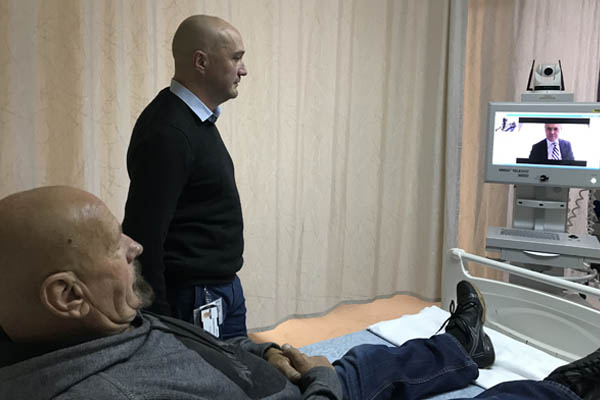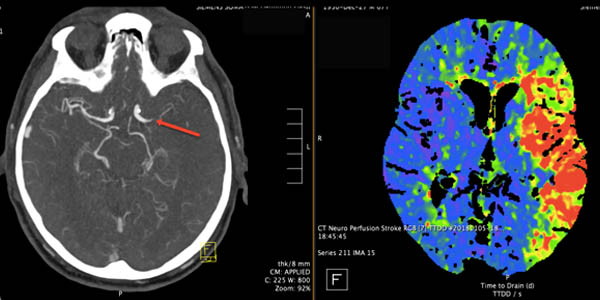Frank’s stroke of good fortune
April 22, 2019in News, Uncategorized
When 69-year-old Frank had a stroke in March 2019 he was fortunate to access the Victorian Stroke Telemedicine (VST) service at Ballarat Base Hospital, a service that is saving lives and improving outcomes for thousands of Victorians.
The statewide VST service is unique in Australia and has now helped 5,000 regional Victorian patients at 17 regional hospitals, including more than 300 patients in Ballarat.
The first hour following a stroke is critical and through VST expert neurologists can use telemedicine to diagnose patients suspected of stroke and advise on treatment.
Stroke telemedicine means 94 per cent of Victorians are within an hour’s reach of world class, lifesaving stroke care.
Frank was with a friend in Ballarat when he began having difficulty speaking and couldn’t pick up tools he wanted to use.
Frank didn’t want to go to hospital or call an ambulance so his friend called Frank’s partner, Leanne, who sensed that he was having a stroke and immediately drove him to Ballarat Base Hospital. Thanks to a stroke telemedicine consultation at the hospital, Frank was treated with clot-busting medication and transported to Melbourne for endovascular clot retrieval.
“We were in Ballarat and the Melbourne neurologist was talking to us through a video screen at the end of the bed, it was like we had Melbourne at the foot of the bed,” Leanne said.
“We had three paramedics including a MICA paramedic with us on the Ambulance trip to Melbourne.”
“The amount of care was just brilliant.”
Frank said the process “was faultless from beginning to end.”
“A month on, the doctor says I’m progressing well,” he said. Each day I feel better”.

Stroke patient Frank and Dr Kraemer in Ballarat having a VST consultation with Professor Chris Bladin
Professor Chris Bladin, Director Stroke Services at Ambulance Victoria, said time saved is brain saved.
“Patient care is priority one and ensuring stroke victims like Frank get the right treatment quickly, through fast expert diagnosis, is imperative,” Professor Bladin said.
VST enables doctors at regional hospitals to have 24-hour access to a neurologist or stroke specialist who can assess the results of a patient’s CT scan.
A telemedicine cart, also known as a teledoc, allows the specialists to review the patient remotely via a video link from their laptop. The expert reviews the brain scan and talks to the patient and the local medical staff via a secure video link, providing diagnosis and advice. They may recommend the use of a thrombolytic drug to dissolve the clot in the patient’s brain.
There is a critical four-and-a-half hour window for suspected stroke patients to receive clot-busting drugs. With
stroke telemedicine, patients are receiving clot-busting drugs on average 40 minutes earlier and often within an hour of arrival at hospital.

